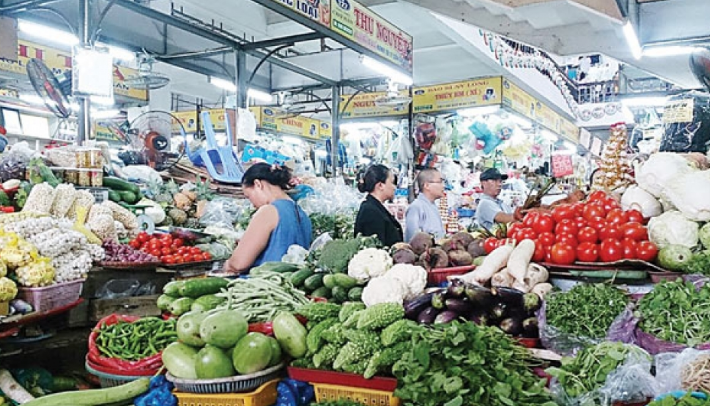Learn the differences between modern trade and traditional trade. The basis of comparison include: description, demand, customer interaction, lead time, customer fulfillment, production range and flexibility among others.
What is Modern Trade?
Modern Trade also referred to as organized retail involves a more organized and coordinated approach to distribution and logistics management. It a contemporary approach to commercial activities and involves large-scale, organized retail operations, advanced technology and global supply chains.
Modern trade operates on a much larger scale compared to traditional trade. It involves large retail chains, supermarkets, hypermarkets, department stores, and e-commerce platforms. These entities have a bigger geographical presence, running across cities, regions or even countries.
Advanced infrastructure and technology are fundamental to modern trade. Modern retailers rely on sophisticated point-of-sale (POS) systems, electronic payment methods, inventory management software, and customer relationship management (CRM) tools to streamline operations, enhance customer experiences, and gather data-driven insights.
The rise of e-commerce is a significant component of modern trade. Online platforms allow retailers to reach customers who prefer shopping from the comfort of their homes. E-commerce also enables personalized recommendations, easy product comparisons, and quick access to reviews.
Modern trade heavily relies on data analytics to make informed business decisions. Customer preferences, buying patterns, and market trends are analyzed to adjust product offerings, pricing strategies, and marketing campaigns.
Many modern trade companies have expanded their operations beyond their home countries, establishing a global footprint. This expansion allows them to tap into new markets, diversify revenue streams, and take advantage of economies of scale.
The growing popularity of modern trade is informed by the fact that, it is the best channel for sale of fast moving consumer products. Though modern trade is entirely an urban phenomenon, it has a market share of 27.2% in overall fast consumer moving goods

What is Traditional trade?
Traditional trade, also known as barter trade or local trade, refers to the age-old method of exchanging goods and services directly between individuals or small groups without the use of modern retail infrastructure or advanced technology. It has been the foundation of commerce for centuries and is deeply rooted in local communities and cultures.
Traditional trade is associated with a complex network of small retailers, dealers, stockists, wholesalers, distributors, open markets, corner stores, kiosks and street vendors. Traditional trade builds on inter-personal relations between the customers and retailers, it occupies close to 80% share in key developing economies. Majority of people buy their food stuff, drink and household goods from these outlets.
In traditional trade, brand choice is either limited to what is available or requires the shopper to ask for it by name. Vendors normally have strong ties to their established local suppliers. Demand in this type of trade is assessed and analyzed by the retailers and the order is placed. Sometimes the field agent taking the order is accompanied by the delivery person (in the delivery vehicle) and the order is filled on spot.
In traditional trade, the barter system is often used, where goods are exchanged directly for other goods without the involvement of currency. This exchange is based on the perceived value of the items being traded. Payment methods in this type of trade are primarily cash-based. Currency is exchanged directly between parties, and electronic payment systems are generally absent.
Transactions in traditional trade occur face-to-face, allowing for personal interactions between buyers and sellers. Also due to its localized nature, the trade offers a limited variety of products based on local resources and skills.
Products in traditional trade are produced locally or within the immediate vicinity. This supports local economies and preserves traditional craftsmanship and skills.

Traditional Trade vs Modern Trade: Key Takeaways
| Basis of Comparison | Traditional Trade | Modern Trade |
| Nature | Involves bartering, local markets, and small-scale exchanges. | Involves large-scale, organized retail operations and global supply chains. |
| Market Presence | Primarily local or regional in scope. | Can have a national or international presence. |
| Infrastructure | Typically lacks advanced infrastructure, such as sophisticated point-of-sale systems. | Relies heavily on advanced technology and infrastructure, including electronic payment systems. |
| Product Variety | Limited product variety due to local resources and production. | Offers a wide range of products due to global sourcing and distribution networks. |
| Distribution Channels | Limited distribution channels, often involving direct sales or small-scale intermediaries. | Involves complex distribution networks, including warehouses, logistics centers, and multiple intermediaries. |
| Customer Reach | Targets local customers and communities. | Reaches a broader customer base, including urban and rural areas. |
| Marketing and Advertising | Relies on word-of-mouth and local advertising. | Utilizes various marketing strategies, including digital marketing and advertising campaigns. |
| Pricing Strategy | Pricing might be influenced by local factors and personal negotiations. | Pricing is often standardized and competitive due to market dynamics. |
| Payment Methods | Cash-based transactions are common. | Accepts a variety of payment methods, including credit/debit cards, digital wallets, and online payments. |
| Supply Chain Efficiency | Supply chain efficiency is generally lower due to smaller scale and limited resources. | Focuses on optimizing supply chains for efficiency and cost-effectiveness. |
| Product Sourcing | Relies on local or nearby sources for products. | Sources products globally to provide a wider range of options to customers. |
| Inventory Management | Inventory management might be less sophisticated, leading to potential stockouts or overstocking. | Utilizes advanced inventory management systems to optimize stock levels. |
| Customer Experience | Personalized customer experience due to smaller scale and direct interactions. | Offers a consistent but sometimes less personalized customer experience due to larger scale. |
| Impact on Local Economy | More directly benefits local economies and communities. | Can contribute to economic growth but might also have potential negative effects on local businesses. |
| Adaptability | Often slower to adapt to changing market trends and technologies. | More adaptable to market shifts due to the integration of technology and data-driven strategies. |